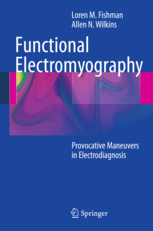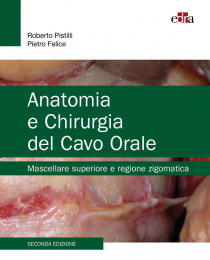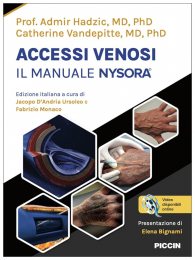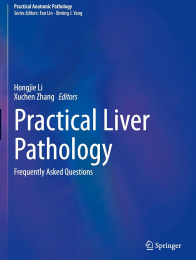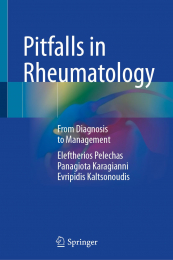Non ci sono recensioni
- Introduces provocative maneuvers to widen the scope of application and sharpen the diagnostic acuity of electrodiagnostic stuides
- Presents three well-documented examples of functional EMG
- Suggests a safe and scientific method for determining other functional maneuvers of value to the electromyographer
Contents
1 Electricity in Medicine: Philosophy Meets Physiology . . . . . . . . 1
Electricity and Medicine Grew Up Together . . . . . . . . . . . . . . 2
Electricity Through History: Minerals . . . . . . . . . . . . . . . . 2
TheBible . . . . . . . . . . . . . . . . . . . . . . . . . . . . . . . 2
Electrophysiology Through History: Animals . . . . . . . . . . . . 3
Evidence of Electricity Through History: Beginning to Understand . 4
AnimalElectricityControversy . . . . . . . . . . . . . . . . . . . . 6
Technological Advances in Medicine . . . . . . . . . . . . . . . . . . 10
EMG Specific Advances . . . . . . . . . . . . . . . . . . . . . . . 19
References . . . . . . . . . . . . . . . . . . . . . . . . . . . . . . . . 21
2 Electrodiagnosis and the Physical Examination: Casting
a Fine Net Widely . . . . . . . . . . . . . . . . . . . . . . . . . . . . 23
Summary of the First Chapter and Perspective on the Next . . . . . . . 23
Relevance to Our Subject . . . . . . . . . . . . . . . . . . . . . . . . 24
ThePhysicalExamination IsNot JustPhysical . . . . . . . . . . . . . 26
“You Can Observe a Lot Just by Looking.”—Yogi Berra . . . . . . . . 26
ItTakesTwo . . . . . . . . . . . . . . . . . . . . . . . . . . . . . . . 26
Proposed Provocative Maneuvers in Electrodiagnosis . . . . . . . . . 30
Philosophical Reflection of the Yet Unseen . . . . . . . . . . . . . . . 31
References . . . . . . . . . . . . . . . . . . . . . . . . . . . . . . . . 32
3 Dynamic Electrodiagnosis: Provocative/Evocative
Maneuvers Define Diagnoses of Exclusion and Refine Dual
Diagnoses . . . . . . . . . . . . . . . . . . . . . . . . . . . . . . . . 33
The Fallacy Inherent in a “Diagnosis of Exclusion” . . . . . . . . . . . 33
Thoracic Outlet Syndrome . . . . . . . . . . . . . . . . . . . . . . . . 37
Piriformis Syndrome . . . . . . . . . . . . . . . . . . . . . . . . . . . 39
Lumbar Spinal Stenosis Versus Herniated Disc . . . . . . . . . . . . . 43
References . . . . . . . . . . . . . . . . . . . . . . . . . . . . . . . . 44
4 Neurological Thoracic Outlet Syndrome: Approaching
a Pathognomonic Sign . . . . . . . . . . . . . . . . . . . . . . . . . 47
Functional Identification of Thoracic Outlet Syndrome . . . . . . . . . 47
Symptoms . . . . . . . . . . . . . . . . . . . . . . . . . . . . . . . . 48
xiii
xiv Contents
Signs . . . . . . . . . . . . . . . . . . . . . . . . . . . . . . . . . . 48
Standard Test . . . . . . . . . . . . . . . . . . . . . . . . . . . . . . . 53
Treatment . . . . . . . . . . . . . . . . . . . . . . . . . . . . . . . . 54
ANewTest . . . . . . . . . . . . . . . . . . . . . . . . . . . . . . . . 54
IntheClinicalContext:Solving thePatient’sProblem . . . . . . . . . 55
GrownGirlwithGuitar . . . . . . . . . . . . . . . . . . . . . . . . . 56
References . . . . . . . . . . . . . . . . . . . . . . . . . . . . . . . . 62
5 Treating Neurological Thoracic Outlet Syndrome Identified
by a Provoked Electromyographic Sign: Analysis of the Data . . . 65
Treatment of Thoracic Outlet Syndrome Based on Dynamic
Changes in Nerve Conduction . . . . . . . . . . . . . . . . . . . . . . 65
What IsBotulinumNeurotoxinTypeB? . . . . . . . . . . . . . . . . 66
Injection . . . . . . . . . . . . . . . . . . . . . . . . . . . . . . . . . 67
PhysicalTherapy . . . . . . . . . . . . . . . . . . . . . . . . . . . . . 68
Scheduled Follow-Up Visits . . . . . . . . . . . . . . . . . . . . . . . 69
Analysis of theData . . . . . . . . . . . . . . . . . . . . . . . . . . . 69
Results . . . . . . . . . . . . . . . . . . . . . . . . . . . . . . . . . . 69
Results of Scalenus Injections and Physical Therapy . . . . . . . . . . 70
References . . . . . . . . . . . . . . . . . . . . . . . . . . . . . . . . 75
6 Piriformis Syndrome: Electrophysiology vs.
Anatomical Assumption . . . . . . . . . . . . . . . . . . . . . . . . 77
Can Piriformis Syndrome Be Operationally Defined? . . . . . . . . . . 77
Gardenpathogenesis . . . . . . . . . . . . . . . . . . . . . . . . . . . 82
Some Cadaveric Studies of Anomalous Sciatic-Piriformis
Intersection . . . . . . . . . . . . . . . . . . . . . . . . . . . . . . . . 83
TheAnatomyClose-Up . . . . . . . . . . . . . . . . . . . . . . . . . 83
Symptoms . . . . . . . . . . . . . . . . . . . . . . . . . . . . . . . . 84
Signs . . . . . . . . . . . . . . . . . . . . . . . . . . . . . . . . . . . 85
Electrophysiological Suggestion of Piriformis Syndrome . . . . . . . . 85
MixofClinical andElectrophysiologicalFindings . . . . . . . . . . . 86
Functional Confirmation: Electrophysiological Evidence
of Piriformis Syndrome . . . . . . . . . . . . . . . . . . . . . . . . . 86
Technique . . . . . . . . . . . . . . . . . . . . . . . . . . . . . . . . 87
Technical Metrics . . . . . . . . . . . . . . . . . . . . . . . . . . . . 88
Measurement ofDelay:TheHLoop . . . . . . . . . . . . . . . . . . 89
Discrepancy Between Motor and Sensory Nerve
Conduction Velocity . . . . . . . . . . . . . . . . . . . . . . . . . . 89
Results . . . . . . . . . . . . . . . . . . . . . . . . . . . . . . . . . . 91
References . . . . . . . . . . . . . . . . . . . . . . . . . . . . . . . . 93
7 Treating Piriformis Syndrome Identified by a Provoked
Electromyographic Sign: Analysis of the Data . . . . . . . . . . . . 95
Treatment of Piriformis Syndrome Patients Identified
by Functional EMG . . . . . . . . . . . . . . . . . . . . . . . . . . . 95
Contents xv
OutcomeStatisticsof the 1,014LegStudy . . . . . . . . . . . . . . . 97
Treatment . . . . . . . . . . . . . . . . . . . . . . . . . . . . . . . 97
Physical Therapy for Piriformis Syndrome∗ . . . . . . . . . . . . . . . 98
How Does Dual Diagnosis Affect Treatment? . . . . . . . . . . . . . . 100
Tabulation ofResults . . . . . . . . . . . . . . . . . . . . . . . . . . 100
Characteristics ofPatientswithPositiveFAIRTests . . . . . . . . . 100
Results . . . . . . . . . . . . . . . . . . . . . . . . . . . . . . . . . 101
Surgical Corroboration of the FAIR Test . . . . . . . . . . . . . . . . 103
Locating thePiriformisMuscle . . . . . . . . . . . . . . . . . . . . . 107
Summary . . . . . . . . . . . . . . . . . . . . . . . . . . . . . . . . . 108
References . . . . . . . . . . . . . . . . . . . . . . . . . . . . . . . . 109
8 Radiculopathy vs. Spinal Stenosis: Evocative
Electrodiagnosis Identifies the Main Pain Generator . . . . . . . . 111
Intraspinal Stenosis vs. Foraminal Stenosis . . . . . . . . . . . . . . . 111
Strategies and Methods . . . . . . . . . . . . . . . . . . . . . . . . . 112
Spondylolisthesis . . . . . . . . . . . . . . . . . . . . . . . . . . . . 117
IsThis InformationUseful? . . . . . . . . . . . . . . . . . . . . . . . 119
Discussion of the Procedure . . . . . . . . . . . . . . . . . . . . . . . 120
References . . . . . . . . . . . . . . . . . . . . . . . . . . . . . . . . 127
9 Treating Spinal Stenosis Identified by an Evoked
Electromyographic Sign: Analysis of the Data . . . . . . . . . . . . 129
IllustrativeExamples . . . . . . . . . . . . . . . . . . . . . . . . . . . 129
TheTale of theHorse’sTail . . . . . . . . . . . . . . . . . . . . . . . 129
Stenosis or Thrombosis . . . . . . . . . . . . . . . . . . . . . . . . . 130
Fusion andConfusion . . . . . . . . . . . . . . . . . . . . . . . . . . 131
Evocative Maneuver . . . . . . . . . . . . . . . . . . . . . . . . . . . 131
Aye,Where’s theRub? . . . . . . . . . . . . . . . . . . . . . . . . . . 132
Recreational Therapy . . . . . . . . . . . . . . . . . . . . . . . . . . 133
If It Walks Like a Duck. . . . . . . . . . . . . . . . . . . . . . . . . . . 134
Small Change . . . . . . . . . . . . . . . . . . . . . . . . . . . . . . 135
When Therapy Is Not Enough . . . . . . . . . . . . . . . . . . . . . . 136
Less Was Probably More . . . . . . . . . . . . . . . . . . . . . . . . 136
A Long Shot . . . . . . . . . . . . . . . . . . . . . . . . . . . . . . . 137
Embarrassment of Riches . . . . . . . . . . . . . . . . . . . . . . . . 138
LessThereThanMet theMRI . . . . . . . . . . . . . . . . . . . . . . 139
NowYouSee It,NowYouDon’t,Oh,There It IsAgain . . . . . . . . 140
ExPluribusUnum . . . . . . . . . . . . . . . . . . . . . . . . . . . . 141
Simple Solutions When There Were Too Many Diagnoses . . . . . . 141
Asymmetrical onBothSides . . . . . . . . . . . . . . . . . . . . . . 141
A Long-Standing Problem with Sitting . . . . . . . . . . . . . . . . . 141
LessThereThanMeets theMRI . . . . . . . . . . . . . . . . . . . . 142
TheWomanwithEverything . . . . . . . . . . . . . . . . . . . . . . 142
HeWhoHesitatesWasRight . . . . . . . . . . . . . . . . . . . . . . 143
Reference . . . . . . . . . . . . . . . . . . . . . . . . . . . . . . . . 144
xvi Contents
10 Extending Dynamic Electrodiagnosis: Application to
Common and Uncommon Conditions . . . . . . . . . . . . . . . . . 145
Other Uses of Functional Electromyography . . . . . . . . . . . . . . 145
Resources . . . . . . . . . . . . . . . . . . . . . . . . . . . . . . . . 146
Memoirs of a Snapping Scapula . . . . . . . . . . . . . . . . . . . . . 147
Triple Trouble . . . . . . . . . . . . . . . . . . . . . . . . . . . . . . 150
Acting on a Hunch . . . . . . . . . . . . . . . . . . . . . . . . . . . . 151
Right toBareArms . . . . . . . . . . . . . . . . . . . . . . . . . . . 151
IroningwithaWrinkle . . . . . . . . . . . . . . . . . . . . . . . . . . 152
TakingMatters toExtremes . . . . . . . . . . . . . . . . . . . . . . . 152
It’sNotAll intheWrist! . . . . . . . . . . . . . . . . . . . . . . . . . 153
Driving for aStretch . . . . . . . . . . . . . . . . . . . . . . . . . . . 154
ExclusiveConsiderations . . . . . . . . . . . . . . . . . . . . . . . . 154
ATurn for theWorse . . . . . . . . . . . . . . . . . . . . . . . . . . 155
WhoIfNotWe? . . . . . . . . . . . . . . . . . . . . . . . . . . . . . 155
Surgery . . . . . . . . . . . . . . . . . . . . . . . . . . . . . . . . . . 158
TheTools of theTrade . . . . . . . . . . . . . . . . . . . . . . . . . . 159
This Book As a Provocative/Evocative Maneuver . . . . . . . . . . . . 162
References . . . . . . . . . . . . . . . . . . . . . . . . . . . . . . . . 162
Index . . . . . . . . . . . . . . . . . . . . . . . . . . . . . . . . . . . . . 163

